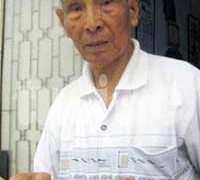With an investment of 2.5 trillion VND, the Vietnam Military History Museum is finalizing the components before launching Phase 1 by the end of June.
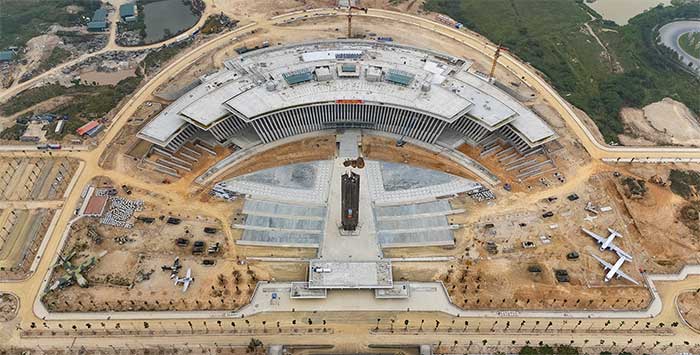
The Vietnam Military History Museum project started in 2020, covering a total area of 38.66 hectares. The facility is located on Thang Long Avenue, Nam Tu Liem District, Hanoi. The main building of the project has an area of over 23,000 m2, with two large ponds of 2,000 m2 in front. At the center of the square stands the Victory Tower, which is 45 meters tall, symbolizing the year 1945 when the country gained independence.
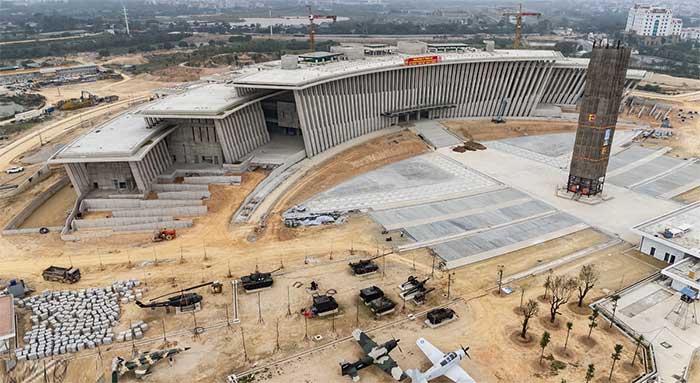
The main exhibition space of the museum is a building that is 35.8 meters tall, consisting of four above-ground floors and one semi-basement. Aircraft, tanks, and various large military equipment obtained from resistance wars, linked to many significant historical events and figures, will be displayed in two areas adjacent to the square, covering a total area of over 20,000 m2.
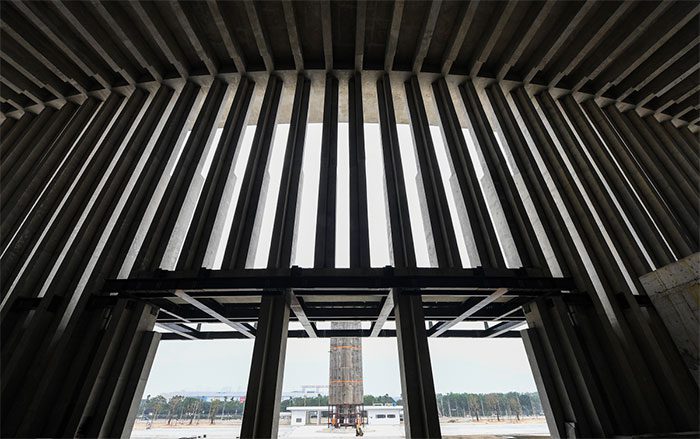
The main building will be organized into various exhibition areas with themes reflecting different spaces and historical timelines.
The first floor will feature six themes from ancient history, the resistance against the French, the resistance against America, to the present day. The second floor will showcase eight specialized topics; seven collections of weapons, military equipment, and other artifacts. The third floor will include artifacts from twelve military specialties such as Air Force, Navy, Special Forces, Artillery, Armored Vehicles, Engineering, Communications, and Chemical Warfare. The fourth floor will serve as a multifunctional space, offering experiential activities and dining areas.

The MiG-21 aircraft, serial number 4324, is one of the national treasures displayed on the first floor of the museum. This aircraft participated in combat to intercept American air raids in Northern Vietnam and shot down 14 American planes.
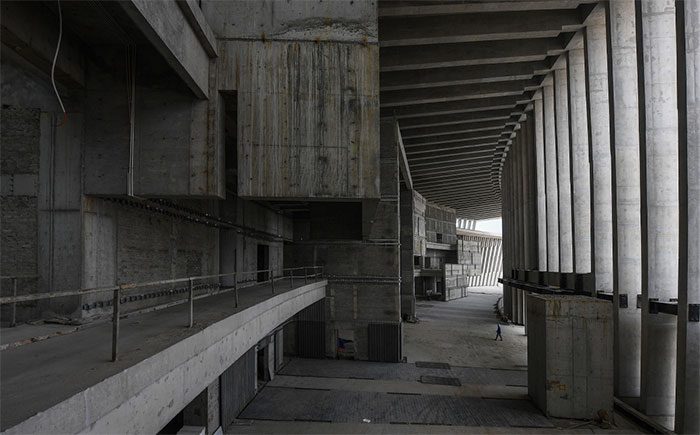
The lowest floor of the main building is designated for storage and administrative technical areas, housing the museum staff’s workspace. This floor also features a storage area of 10,000 m2 built to modern preservation standards.

One of the earliest artifacts brought to the museum is the MiG-21 fighter jet, serial number 5121, piloted by hero Pham Tuan, which shot down a B-52 aircraft during the Operation Linebacker II on the night of December 27, 1972. Additionally, this MiG-21 shot down four other types of American aircraft under different pilots.

The white Renault Juvaquatre car, a “historical witness” during the 1968 Tet Offensive and Uprising. The commando Nguyen Tan Mieng used this vehicle to transport liberation soldiers from Ap Moi, Go Vap to attack the General Staff of the Saigon Army.
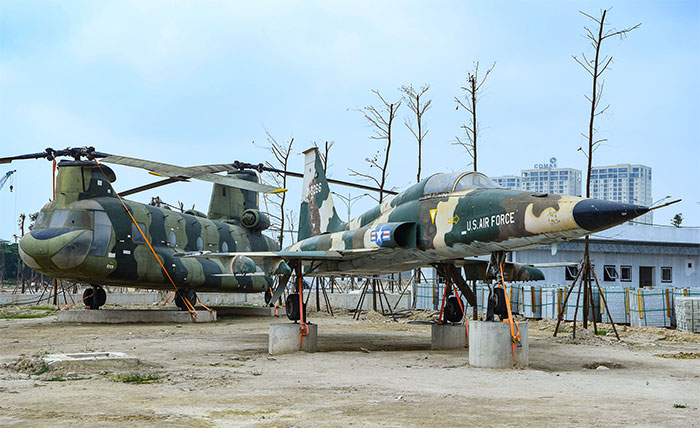
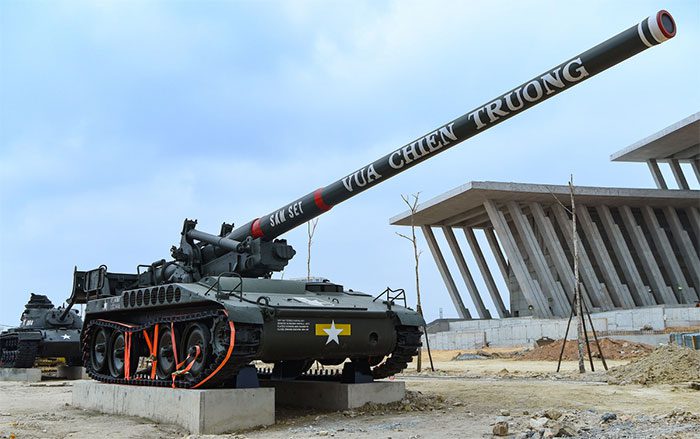
Self-propelled artillery and tanks displayed in the museum grounds. The 175 mm self-propelled artillery designed and produced by the United States, known as “Thunderbolt – King of the Battlefield,” has a maximum road speed of 56 km/h, a firing range of 32 km, and a damage area of nearly 1,000 m2, with a shell weighing 68 kg and a crew of five. Vietnam obtained four of these artillery pieces during the Tan Lam battle that destroyed artillery point 241 in Quang Tri in April 1972. This artillery piece was later brought for display at the Army Museum, now the Vietnam Military History Museum, in June 1974.
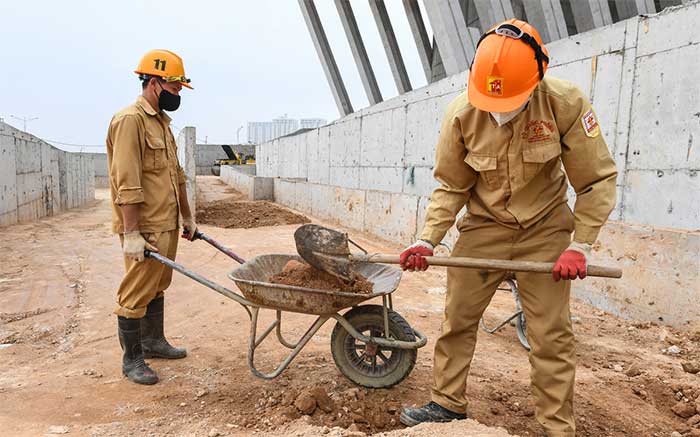
Construction workers at the project site.
According to the plan, the project is set to complete Phase One by June, which includes the exhibition areas on the first floor of the main building, the square, the memorial, and ancillary items such as a children’s playground and parking lot. The official inauguration is expected by the end of 2024, serving both domestic and international visitors.

According to the project management board, once operational, the museum will serve as a cultural and informational center on military history and military heritage of the armed forces and the nation. With a vast and rich collection of artifacts and information, the museum will meet the needs for education, research, cultural enjoyment, and tourism for the public, the armed forces, and international tourists. It is also expected to be a training center for high-level personnel in museum studies.
The Vietnam Military History Museum is anticipated to be a landmark project for Hanoi and the nation, featuring a modern, unique, multifunctional architectural complex that reflects national identity and the traditional image of Vietnam’s military.




















































